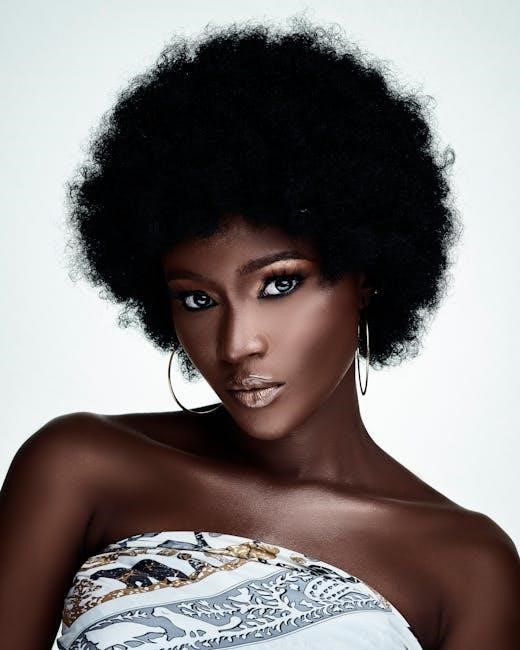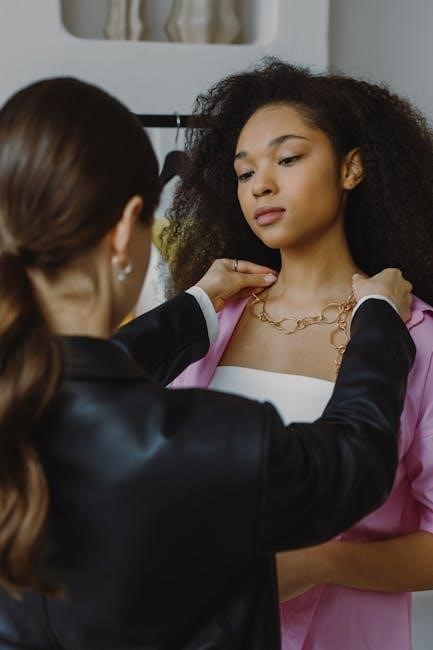Jewelry holds a special place in human history, with evidence suggesting its use dates back to ancient times. From simple adornments to elaborate creations, jewelry serves various purposes, including self-expression, status, and sentimental value. This guide explores jewelry.
Jewelry, a timeless form of personal adornment, has captivated humanity for millennia. From the simplest beaded necklaces to the most extravagant diamond tiaras, jewelry serves as a powerful means of self-expression, cultural identity, and personal storytelling. The allure of jewelry lies not only in its aesthetic beauty but also in its symbolic significance, often imbued with memories, traditions, and emotions.
This introduction delves into the fascinating world of jewelry, exploring its rich history, diverse materials, and the skilled craftsmanship that transforms raw elements into wearable art. We will uncover the various types of jewelry, from necklaces and rings to earrings and bracelets, examining their unique designs and the techniques used to create them. Whether you’re a seasoned collector or a curious newcomer, this journey through the world of jewelry will provide valuable insights into its enduring appeal and cultural importance. Prepare to be mesmerized by the sparkle, elegance, and artistry that define the world of jewelry.

Types of Jewelry
Jewelry encompasses a wide array of adornments, each serving a unique purpose and style. From necklaces that grace the neckline to rings that adorn fingers, jewelry offers diverse options for personal expression and enhancement of one’s appearance with elegance.
Necklaces
Necklaces are a versatile form of jewelry worn around the neck, adding elegance and style to any outfit. They come in various lengths, from short chokers to long, flowing chains, allowing for diverse styling options. Materials range from precious metals like gold and silver to beads, gemstones, and even unconventional materials.
Necklaces can be simple and understated, featuring delicate chains or minimalist pendants, suitable for everyday wear. Alternatively, they can be bold statement pieces adorned with intricate designs, vibrant colors, and eye-catching focal points, perfect for special occasions or adding a touch of glamour to an ensemble.
Consider the occasion, neckline of your outfit, and your personal style when choosing a necklace. A well-chosen necklace can enhance your features, complement your outfit, and express your individuality. Experiment with different styles and lengths to discover what suits you best and elevates your look.
Rings
Rings, circular bands worn on the fingers, hold deep symbolic meanings and serve as personal adornments. They can represent commitment, status, or simply a fashion statement, making them a significant piece of jewelry. Rings come in various styles, from simple bands to ornate designs featuring gemstones and intricate metalwork.
Choosing the right ring involves considering factors like finger size, personal style, and the occasion; A simple band in gold or silver can be a classic and versatile choice for everyday wear. Engagement rings often feature a prominent diamond or gemstone, symbolizing love and commitment. Fashion rings allow for greater creativity and can incorporate various materials and designs.
Proper ring care is essential to maintain its beauty and longevity. Regular cleaning with a soft cloth and gentle soap can help remove dirt and oils. Store rings in a safe place, away from harsh chemicals and extreme temperatures. With proper care, a ring can be a cherished possession for years to come.
Earrings
Earrings are adornments worn on the earlobes, adding elegance and personality to any look. From simple studs to elaborate dangles, earrings come in a wide variety of styles and materials. They have been a popular form of jewelry for centuries, with evidence of their use found in ancient civilizations.
When selecting earrings, consider your face shape, hairstyle, and the occasion. Stud earrings are a classic and versatile choice for everyday wear, while hoop earrings can add a touch of glamour. Dangle earrings are perfect for special occasions, adding movement and sparkle to your look. Choose materials that complement your skin tone and personal style, such as gold, silver, or gemstones.
Taking care of your earrings is essential to keep them looking their best. Clean them regularly with a soft cloth and gentle soap to remove dirt and oils. Store them in a jewelry box or pouch to prevent scratches and tangling. For sensitive ears, choose hypoallergenic materials like surgical steel or titanium to avoid irritation.
Bracelets
Bracelets are decorative bands worn around the wrist, serving as a stylish accessory and often holding sentimental value. They come in a diverse range of styles, from delicate chains to bold cuffs, catering to various tastes and occasions. Throughout history, bracelets have been crafted from different materials like metal, beads, leather, and textiles.
Choosing the right bracelet involves considering factors like wrist size, personal style, and the intended use. A slender chain bracelet can add a subtle touch of elegance, while a cuff bracelet makes a statement. Beaded bracelets offer a playful and colorful option, and charm bracelets allow for personalization. When selecting a bracelet, ensure it fits comfortably without being too tight or too loose.
Proper care ensures the longevity of your bracelets. Clean them regularly with a soft cloth and appropriate cleaning solutions based on the material. Store them in a jewelry box or pouch to prevent scratches and tangling. Avoid exposing bracelets to harsh chemicals or extreme temperatures. With proper care, your bracelets will continue to enhance your style for years to come.

Jewelry Making Techniques
Jewelry making involves a variety of techniques to transform raw materials into wearable art. From ancient methods to modern innovations, these techniques offer endless possibilities for creating unique and personalized jewelry pieces, that can be learned through online tutorials and workshops.
Wire Wrapping
Wire wrapping is a versatile jewelry-making technique that involves using wire to capture and secure beads, stones, or other decorative elements. This method allows for intricate designs without soldering, making it accessible to beginners. Skilled artisans can create elaborate pieces with woven patterns and complex structures.
The beauty of wire wrapping lies in its adaptability. Different gauges and types of wire, such as copper, silver, and gold, can be used to achieve various aesthetics. The technique is commonly employed to make pendants, earrings, bracelets, and rings, showcasing the natural beauty of the components.
Learning wire wrapping can be a rewarding experience, as it opens doors to creative expression and the ability to craft unique, handmade jewelry. With practice, one can master various wrapping styles and incorporate different embellishments, resulting in stunning and personalized wearable art. Wire wrapping is a great way to start learning about jewelry-making.
Beading
Beading is a fundamental jewelry-making technique involving stringing beads together using thread, wire, or other flexible materials. This method is widely popular due to its simplicity and the vast array of bead types available, including glass, crystal, gemstone, and seed beads. Beading allows for creating diverse jewelry pieces.
The possibilities within beading are endless, from simple single-strand necklaces to intricate woven bracelets. Different beading stitches, such as peyote stitch, brick stitch, and right-angle weave, can be employed to create unique textures and patterns. Beading is often combined with other techniques like wire wrapping to add dimension.
Beading is an excellent starting point for aspiring jewelry makers due to its low barrier to entry and the opportunity to experiment with colors, textures, and designs. Whether you are creating a delicate beaded necklace or a bold statement bracelet, beading offers a satisfying way to express your creativity and craft beautiful, personalized jewelry. Beading is a fun way to express yourself.
Metal Clay
Metal clay is an innovative material in jewelry making, composed of microscopic metal particles, an organic binder, and water. This pliable clay can be molded, shaped, and textured like traditional clay. Once fired in a kiln, the organic binder burns away, leaving behind a solid metal piece. This technique offers unique opportunities.
Metal clay is available in various metals, including silver, gold, bronze, and copper, allowing jewelers to create pieces with different colors and properties. It’s especially popular for crafting intricate details, organic shapes, and personalized designs that would be difficult to achieve with traditional metalworking methods. After firing, the metal can be further refined.
The use of metal clay opens up a realm of creative possibilities for both beginners and experienced jewelers. Its ease of use and versatility make it ideal for creating pendants, earrings, charms, and even sculptural jewelry pieces. Metal clay provides a unique and accessible way to explore metal jewelry making, combining the tactile pleasure of clay with the lasting beauty of metal. It’s very unique!

Starting a Jewelry Business
Launching a jewelry business requires careful planning and execution. From designing and producing unique pieces to branding and marketing your creations, understanding the key steps is crucial for success in the competitive jewelry market. Starting a business is hard!
Planning and Production
Successful jewelry businesses begin with meticulous planning. Start by defining your niche – what type of jewelry will you specialize in? Consider your target audience and their preferences, researching current trends and identifying gaps in the market. Develop a comprehensive business plan outlining your financial projections, operational strategies, and marketing approaches.
Production is the heart of your jewelry business. Determine your production method: will you handcraft each piece, outsource production, or use a combination of both? Source high-quality materials from reputable suppliers, ensuring they align with your brand’s values and aesthetic. Establish efficient workflows to streamline the creation process, minimizing waste and maximizing output.
Quality control is paramount. Implement rigorous inspection procedures at every stage of production to maintain consistent standards. Address any defects promptly and ensure your jewelry meets customer expectations. Consider investing in professional photography to showcase your creations online, highlighting their unique features and craftsmanship.
Branding and Marketing
A strong brand is essential for standing out in the competitive jewelry market. Define your brand identity – what values do you represent, and what makes your jewelry unique? Develop a memorable brand name, logo, and visual style that resonates with your target audience. Craft a compelling brand story that connects with customers on an emotional level.
Effective marketing strategies are crucial for reaching potential customers. Create a professional website and online store to showcase your jewelry and facilitate online sales. Utilize social media platforms to engage with your audience, share behind-the-scenes content, and run targeted advertising campaigns. Consider participating in local craft fairs and markets to build brand awareness and connect with customers in person.
Collaborate with influencers and bloggers to promote your jewelry to a wider audience. Offer excellent customer service and build strong relationships with your clients. Encourage customer reviews and testimonials to build trust and credibility. Continuously analyze your marketing efforts and adapt your strategies based on performance data.

Jewelry Care and Storage
Proper care and storage are essential for preserving the beauty and longevity of your jewelry. Different materials require specific care instructions, so always consult the manufacturer’s recommendations or a professional jeweler.
In general, avoid exposing jewelry to harsh chemicals, such as chlorine, detergents, and perfumes. Remove jewelry before swimming, showering, or engaging in activities that may cause damage. Clean your jewelry regularly with a soft cloth to remove dirt and oils. For more thorough cleaning, use a mild soap and water solution or a specialized jewelry cleaner.
Store jewelry in a clean, dry place away from direct sunlight and extreme temperatures. Individual compartments or soft pouches can prevent scratching and tangling. For delicate pieces, consider using a jewelry box with a soft lining. Proper jewelry care ensures your treasured pieces remain beautiful for years to come, preserving memories and enhancing your style.